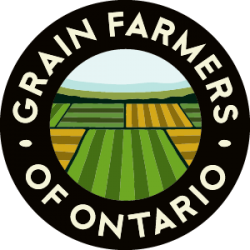Using soil mineralizable nitrogen and climate factors to improve fertilizer N recommendations for corn in Ontario
Principal Investigator
Mehdi Sharifi
Research Institution
Trent University (former employee)
Project Start
February 2013
Project End
March 2015
Objectives
- Determine the potential capacity of Ontario soils for supplying nitrogen (N) to corn.
- Predict potential capacity of Ontario soils for supplying N to corn using simple laboratory N tests.
- Assess the ability of laboratory N tests for predicting the supply of N from the soil to corn.
- Develop N fertilizer recommendation table(s) for successful laboratory soil N test(s) using corn N response trials.
Impact
- The improved understanding of the potential capacity of Ontario soils for supplying nitrogen (N) to the crop without N fertilizer application will allow for more accurate N fertilizer recommendations.
- The development of new tools for assessing N in Ontario soils will allow grain farmers to fine-tune the N fertilizer application rates for grain corn, maximizing their return on investment while reducing their environmental impact.
Scientific Summary
Matching nitrogen (N) supply to crop N demand is one of the most effective ways of meeting economic and environmental goals in crop production. Research has shown that general N recommendations for corn are not precise and cannot adjust for specific weather conditions. Soil mineralizable nitrogen (N) is the main component of soil N supply in humid temperate region and should be considered in N fertilizer recommendations. The main barrier in the way of making accurate N recommendations is uncertain N mineralization contribution due to temperature and moisture variability and their unpredictability.
The project aimed to develop a soil N test that includes the soil N mineralization contribution to plant N requirement and improve N fertilizer recommendations for corn in Ontario. At each site, soil samples were taken in the spring and analyzed for several readily mineralizable N fractions using chemical laboratory methods and correlated to relative yield (RY) and maximum economic rate of N (MERN) measured in the field. In theory, this would allow us to correlate, calibrate and interpret a soil N test. The study was conducted over 2013 and 2014 growing seasons in 19 sites total. The pre-plant N test (PPNT) and water soluble N (WSN) concentration (0-30cm depth) at planting were the best predictors of fertilizer N requirement in 2014. When combining data from the first and second growing seasons, it was found that the PPNT and WSN at planting were successful at predicting fertilizer N rates. The success of both PPNT and WSN only when combining the two years of data supports the inherent variability of soil N as it is dependent on early season climate. When soils were categorized based on soil texture relationships improved. We found that grouping soils based on clay content revealed relationships that may be dependent on soil texture. Furthermore, we found that only coarse textured soils showed promising relationships between laboratory soil N tests and field-based indicators of soil N supply. The medium textured soils had variable and unpredictable responses. Our findings suggest that N fertilizer recommendations for grain corn can be improved; however, further field validations are required.

